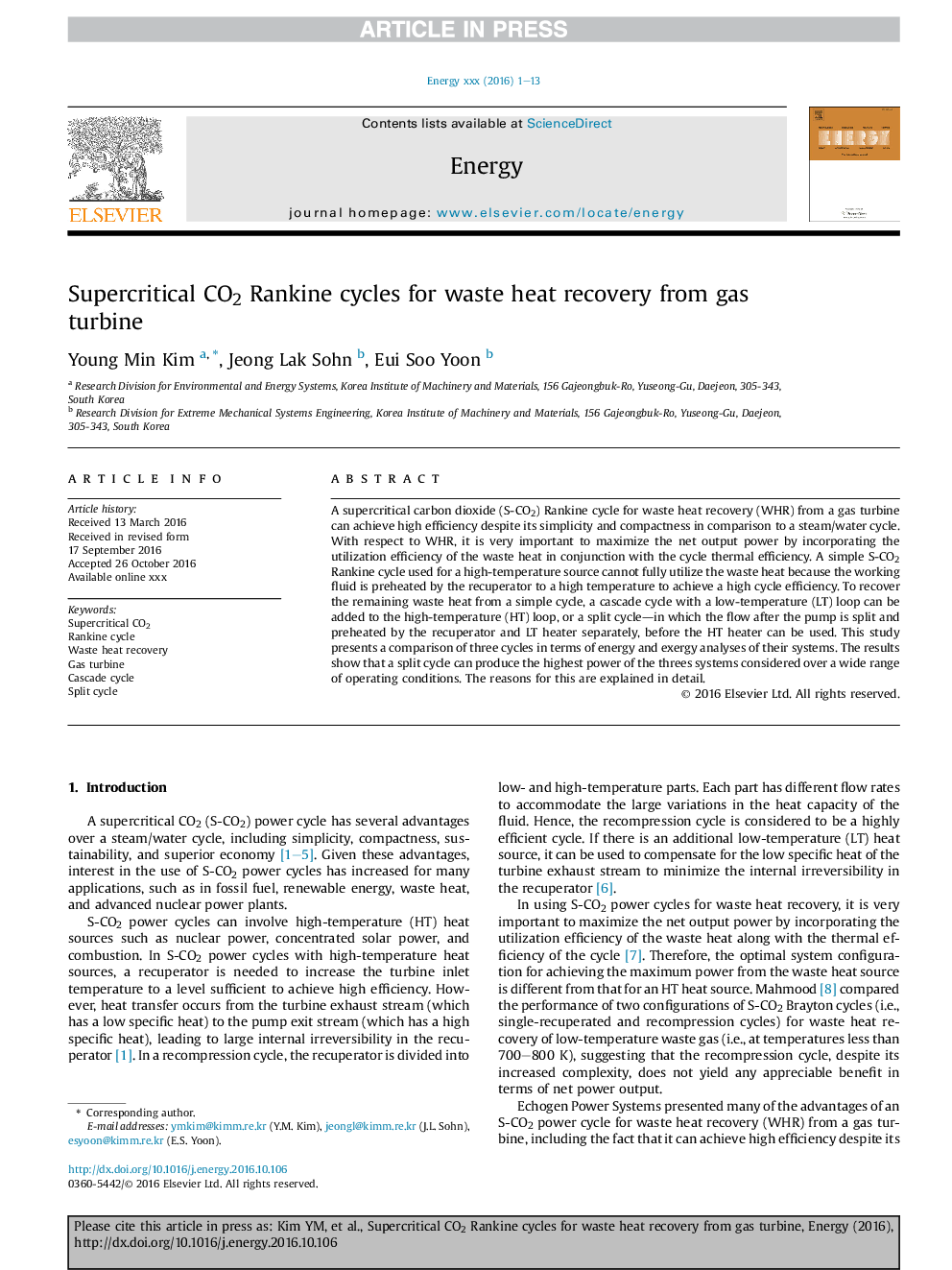| Article ID | Journal | Published Year | Pages | File Type |
|---|---|---|---|---|
| 5477111 | Energy | 2017 | 13 Pages |
Abstract
A supercritical carbon dioxide (S-CO2) Rankine cycle for waste heat recovery (WHR) from a gas turbine can achieve high efficiency despite its simplicity and compactness in comparison to a steam/water cycle. With respect to WHR, it is very important to maximize the net output power by incorporating the utilization efficiency of the waste heat in conjunction with the cycle thermal efficiency. A simple S-CO2 Rankine cycle used for a high-temperature source cannot fully utilize the waste heat because the working fluid is preheated by the recuperator to a high temperature to achieve a high cycle efficiency. To recover the remaining waste heat from a simple cycle, a cascade cycle with a low-temperature (LT) loop can be added to the high-temperature (HT) loop, or a split cycle-in which the flow after the pump is split and preheated by the recuperator and LT heater separately, before the HT heater can be used. This study presents a comparison of three cycles in terms of energy and exergy analyses of their systems. The results show that a split cycle can produce the highest power of the threes systems considered over a wide range of operating conditions. The reasons for this are explained in detail.
Related Topics
Physical Sciences and Engineering
Energy
Energy (General)
Authors
Young Min Kim, Jeong Lak Sohn, Eui Soo Yoon,
